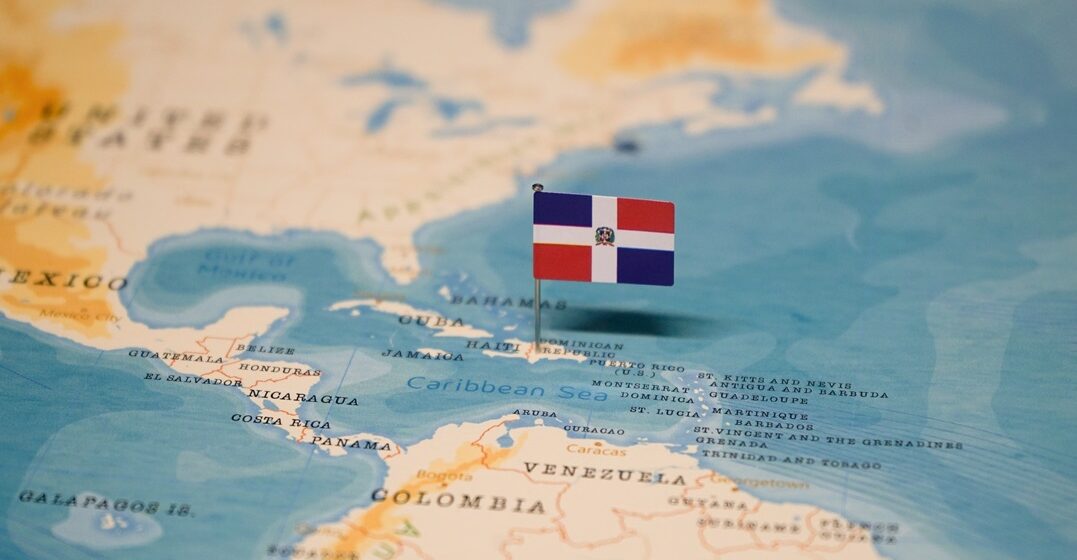Published on February 20, 2024

Exploring Dominican Spanish: Accent, grammar and more

Spanish ranks among the world’s most spoken languages. Its wide geographical distribution has promoted the rise of diverse variants, a vibrant example of which is Dominican Spanish. The Dominican Republic may be renowned for its beaches and lively culture, but it’s also worth celebrating for its distinctive twist on the Spanish language.
Dominican Spanish stands out for its slang, accent and colorful expressions. A widespread diaspora of Dominican immigrants ensures that the beautiful Dominican accent is not limited to a single island in the Caribbean, but is also commonly heard throughout the United States — especially in the Northeast U.S. And this melodic variant has transcended borders through music, too, thanks to the influence of Dominican artists like Natti Natasha and Prince Royce.
Curious to learn more about the history and cadences of Dominican Spanish? Then let’s explore the evolution of Spanish in the Dominican Republic and discover what makes its accent and grammar so unique.
The influence of diverse cultures — including African, Taíno, Arawak and even U.S. culture — has shaped the particular evolution of Spanish in the Dominican Republic. But why exactly do Dominicans speak this language in the first place? And how have these other cultures influenced their variant of Spanish?
The present-day Dominican Republic was once part of the Spanish Empire. Christopher Columbus landed on the island (today shared with Haiti) in 1492. This island remained under Spanish colonial rule until the late-18th century, during which time settlers from Europe introduced the Spanish language.
Though much of the Spanish heard on this island initially derived from the Andalusian and Canarian dialects, other influences gradually emerged. Chief among these were influences of the indigenous Arawak population and the enslaved people from Africa. This explains why Dominican Spanish today incorporates words of both Arawak and African origin. English syntax also seeped into daily usage, owing to the U.S. occupation of the island from 1916 to 1924.
Nowadays, Spanish is recognized as the Dominican Republic’s official language. More than 10 million Dominican residents (of a total population of 11 million) speak Spanish. Nevertheless, the island’s geographical richness has led to the emergence of distinct dialects throughout the country, such as Cibaeño.
Now that we’ve reviewed how Spanish evolved in the Dominican Republic, let’s get into what makes it so special.
What characteristics distinguish the Dominican accent from other variations throughout the Spanish-speaking world? Here are some notable features:
We can start to learn how to speak or understand Dominican Spanish by grasping the nuances of its pronunciation. Next, we should take it a step further and explore the grammar! Let’s take a look:
Up for some common Dominican Spanish slang and phrases? These may come in handy if you’re planning to visit a Dominican beach sometime soon.
Let’s first dive into some vocabulary:
| Dominican word | Meaning | Example sentence |
| allantoso | Someone who talks a lot but doesn’t act (bluffer) | Ella es muy allantosa. (She talks a lot but does little.) |
| bacano | great/cool | ¡Qué bacana eres! (You’re great!) |
| fiebrú | Someone who is addicted to or fanatical about something | Daniela es una fiebrú del café. (Daniela is addicted to coffee.) |
| jepeta | SUV | Voy en la jepeta. (I’m coming with the SUV.) |
| kachú | ketchup | La hamburguesa sin kachú (the burger without ketchup) |
| nítido | cool | Tus zapatos están nítidos. (Your shoes are cool.) |
| palomo | a man who is shy when flirting | Él es un palomo y no me ha invitado a salir. (He’s shy and hasn’t asked me out.) |
| pana | a buddy | Él es pana mío desde bebés. (He’s been my buddy since we were babies.) |
| tato | it’s all good | Aquí tato. (It’s all good here.) |
| ticher | t-shirt | Mi ticher está sucia. (My t-shirt is dirty.) |
| tíguere | an astute man | Él es un tíguere, ten cuidado. (He’s astute, be careful.) |
| vaguada | a storm | Se viene una vaguada. (There’s a storm coming.) |
| vaina | a random thing | Esta vaina no tiene sentido. (This thing doesn’t make sense.) |
| viejebo | someone who is older but adopts cultural characteristics of younger generations | Todos en este bar son viejebos. (Everyone in this bar is older but acts young.) |
| yala | alright | Yala, yo no te busco más. (Alright, I won’t reach out anymore.) |
Common phrases:
| Dominican phrase | Meaning |
| ¡Qué vaina! | How annoying! |
| ¿Qué lo que? | What’s up? |
| Alante, alante | You’re getting ahead of yourself. |
| Móntame la pura | Be honest with me. |
| Te pasaste | You’ve crossed a line. |
| Vamo’ a lo que vinimo’ | Let’s do what we came to do (to act without delay). |
Yala (alright), that was our quick rundown of Dominican Spanish and its nuances! Whether you’re learning more about this variant thanks to an upcoming trip or just out of curiosity, we hope that this article has given you a good baseline. If you’re indeed planning to visit the beautiful island, ¡disfruta esa vaina! (enjoy “that thing”!).